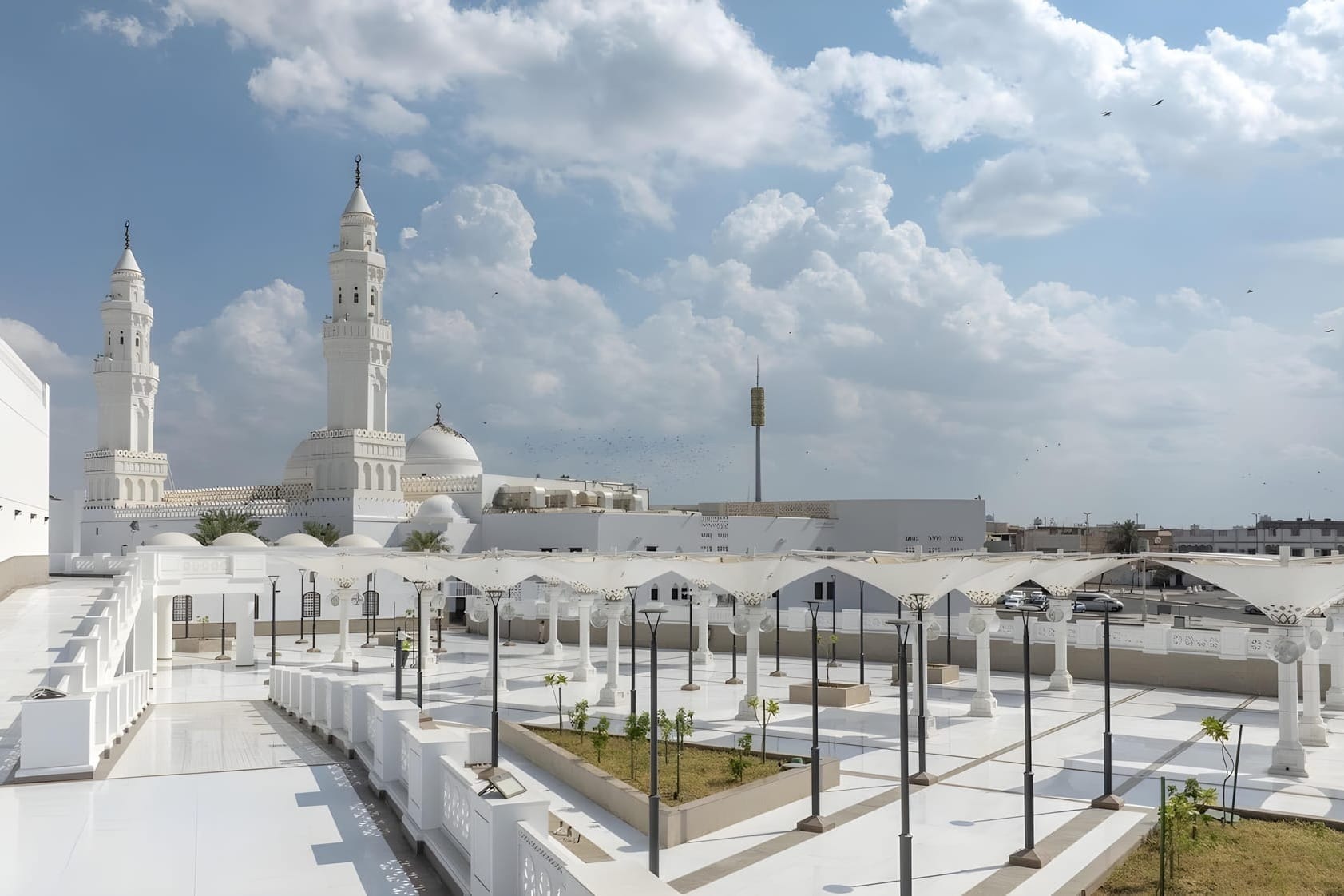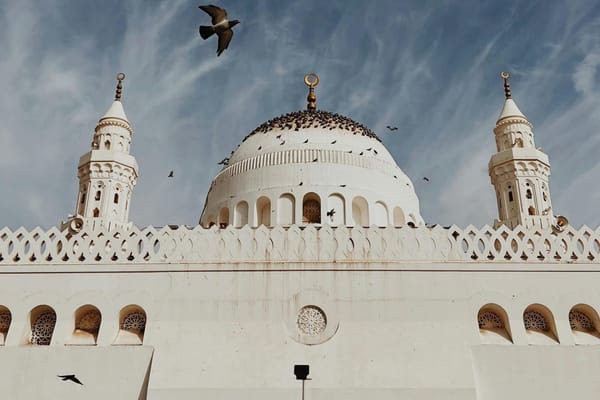Among the many sacred sites in Madinah, Masjid Qiblatain stands out for its historical and spiritual significance. Known as the "Mosque of the Two Qiblas," this mosque witnessed a profound turning point in Islamic worship — the moment when the direction of prayer (qibla) changed from Jerusalem to Makkah.
Located just a few kilometers from Masjid un-Nabawi, the al Qiblatain mosque attracts thousands of pilgrims who want to connect with a pivotal chapter in Islamic history. For visitors exploring the city via the Madinah Hop-On Hop-Off Bus, this site is a convenient and essential stop on their spiritual journey.
What Does Masjid Qiblatain Mean?
The name Masjid Qiblatain literally translates to "Mosque of the Two Qiblas." It refers to the unique event where the Prophet Muhammad (ﷺ), while leading prayer, received divine revelation to change the direction of the qibla from Bayt al-Maqdis (Jerusalem) to the Kaaba in Makkah.
What's the Old Name of Masjid Qiblatain?
Before it became widely known as Masjid al Qiblatain, this mosque was referred to as the Mosque of Banu Salamah, named after the local tribe whose land it was built on. It was a modest prayer area used by the Prophet (ﷺ) when visiting that part of Madinah. Only after the pivotal event of the qibla change did it earn its current name, which captures the essence of its historical importance.
So What Happened at Masjid Qiblatain?
The Early Qibla: Facing Jerusalem
In the earliest years of Islam, Muslims prayed facing Jerusalem. This direction symbolized continuity with the Abrahamic traditions of Judaism and Christianity.
The Revelation
During a Dhuhr (midday) prayer in Madinah, while the Prophet (ﷺ) was leading the congregation at the Banu Salamah tribe's mosque, a command from Allah was revealed:
"We have certainly seen the turning of your face, [O Muhammad], toward the heaven, and We will surely turn you to a qibla with which you will be pleased. So turn your face toward al-Masjid al-Haram."
— (Surah Al-Baqarah, 2:144)
Without pausing the prayer, the Prophet (ﷺ) immediately turned to face Makkah — and so did the companions behind him.
This remarkable mid-prayer shift earned the mosque its lasting name: Masjid Qiblatain.
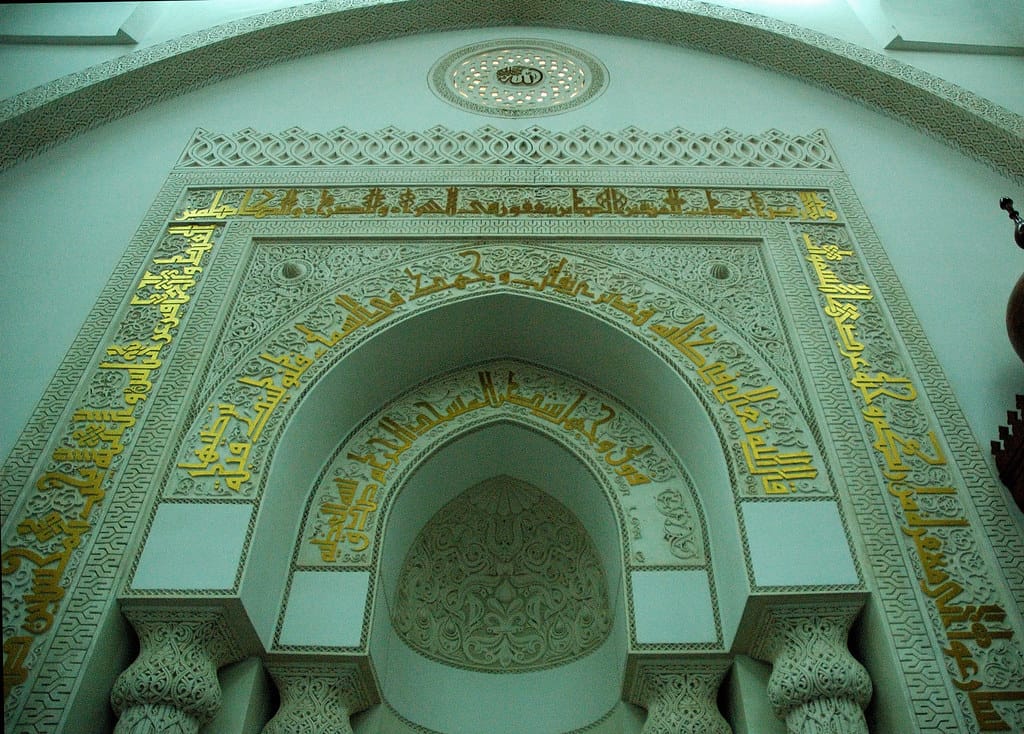
Where Is Masjid Qiblatain Located?
Masjid Qiblatain is situated in the northwest part of Madinah, in the Al-Khalidiyah district. It’s approximately 5 kilometers from Masjid un-Nabawi and is easily accessible by various means of transport. Many pilgrims prefer including it in their ziyarat itinerary using the Madinah Hop-On Hop-Off Bus, which makes scheduled stops at this and other iconic Islamic landmarks around the city.
Key Nearby Landmarks
While visiting Masjid Qiblatain, you’re also just a short distance away from several other iconic sites in Madinah that hold deep historical and spiritual importance:
Masjid an-Nabawi: The Prophet's Mosque
Located about 5 kilometers from Masjid Qiblatain, this is the second holiest mosque in Islam and the final resting place of Prophet Muhammad (ﷺ). Originally built by the Prophet himself, it’s a center of learning, prayer, and reflection for millions of pilgrims each year. Don't miss the opportunity to visit Al-Rawdah, a revered area described by the Prophet (ﷺ) as a garden from the gardens of Paradise.
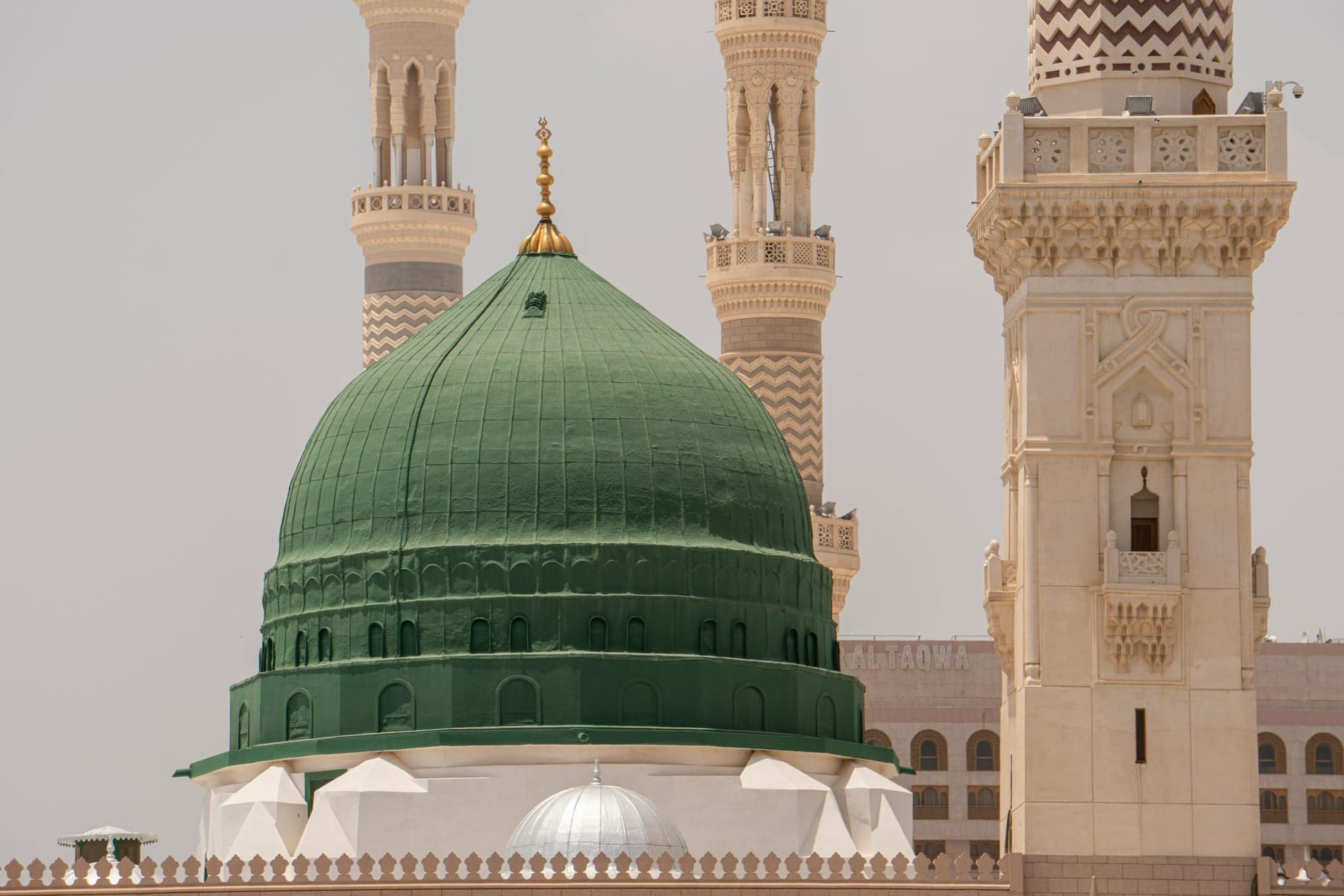
Mount Uhud: Site of the Famous Battle
Just 7 kilometers from Masjid Qiblatain lies Mount Uhud, the site of the significant Battle of Uhud fought in 3 AH. Visitors often pay respects at the graves of the martyrs of Uhud, including Hamzah ibn Abdul Muttalib, the beloved uncle of the Prophet (ﷺ). The mountain serves as a powerful reminder of the early challenges faced by the Muslim community.
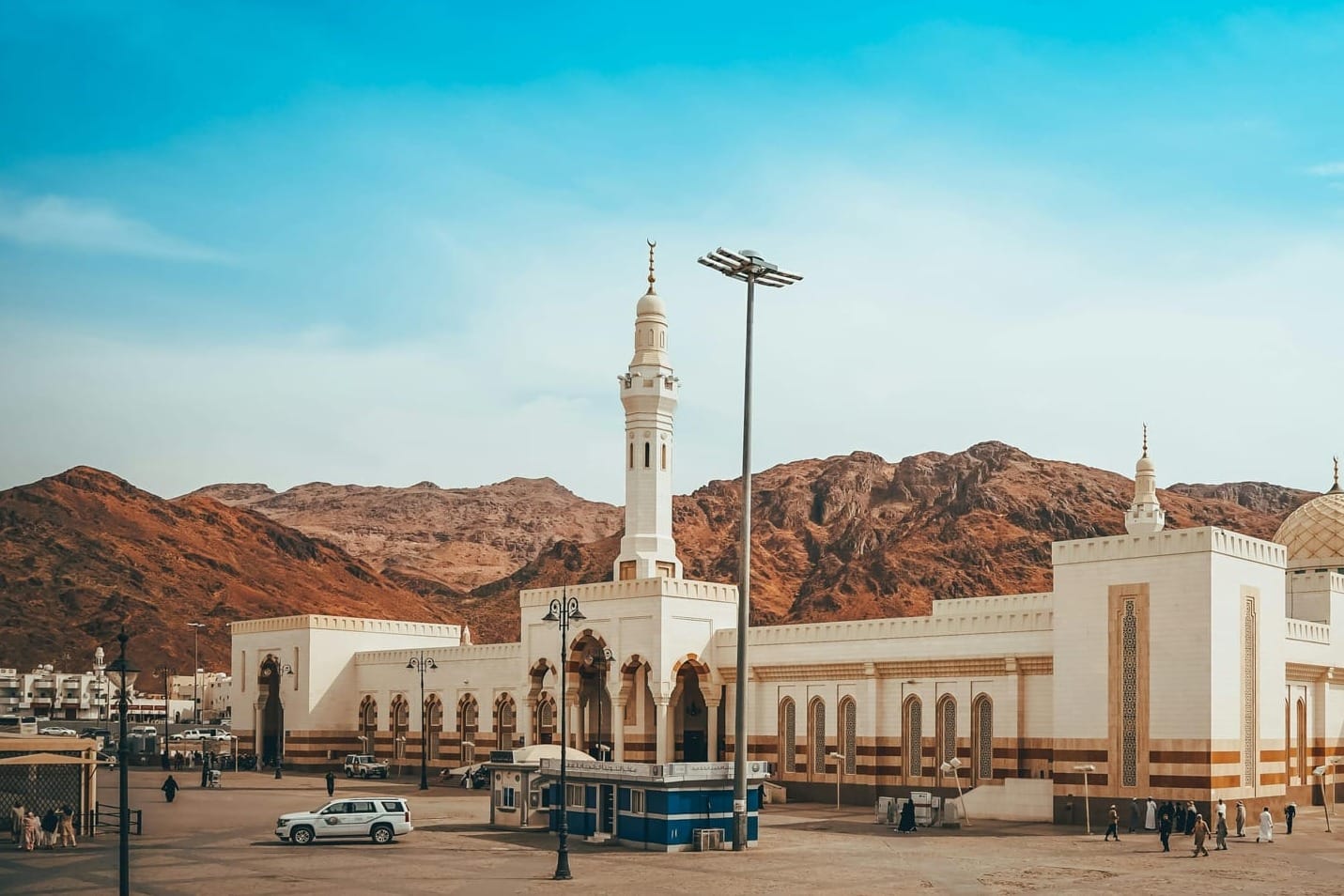
Masjid Quba: The First Mosque in Islam
Roughly 6.5 kilometers from Masjid Qiblatain, Masjid Quba holds the distinction of being the first mosque ever built in Islam. The Prophet ﷺ laid its foundation upon arriving in Madinah. According to hadith, offering two rak‘ahs in this mosque is equivalent to the reward of an umrah. It's a serene and spiritually rewarding stop for any visitor.
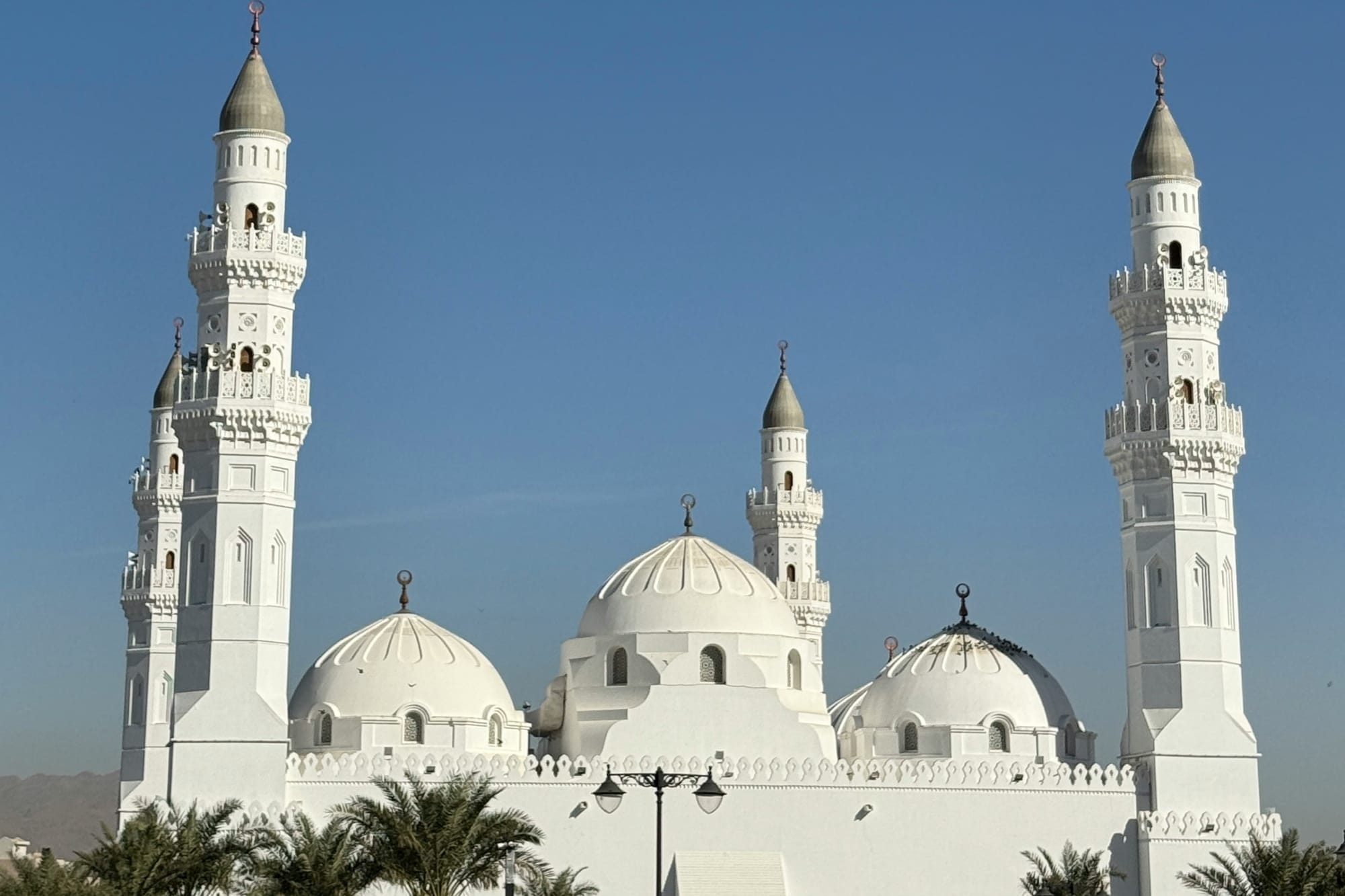
Reward of Praying in Masjid Qiblatain
While the specific rewards of praying in Masjid Qiblatain are not explicitly mentioned in hadith literature like those of Masjid al-Haram, Masjid an-Nabawi, or Masjid al-Aqsa, the mosque holds immense historical and symbolic value. Praying here is a chance to reflect on a major turning point in Islamic history — the moment of divine instruction and the obedience of the Prophet (ﷺ) and his companions. Many scholars and visitors believe that offering salah here, with sincere reflection, is spiritually uplifting and deeply rewarding.
Architecture and Renovation
Original Structure
The original mosque was modest in size, reflecting the architectural simplicity of the Prophet’s era. Over centuries, several rulers contributed to its maintenance and redesign.
Modern Renovation
In 1987, under the patronage of King Fahd, the mosque was completely rebuilt with a larger capacity and enhanced design. Today, it combines traditional Islamic motifs with modern functionality.

Features:
- Two Minarets & Two Domes – Symbolizing its dual qiblas
- Spacious prayer hall – To accommodate growing visitor numbers
- Mihrab Facing Makkah – The old mihrab toward Jerusalem was respectfully removed
- White Marble Interiors – Create a serene, peaceful atmosphere
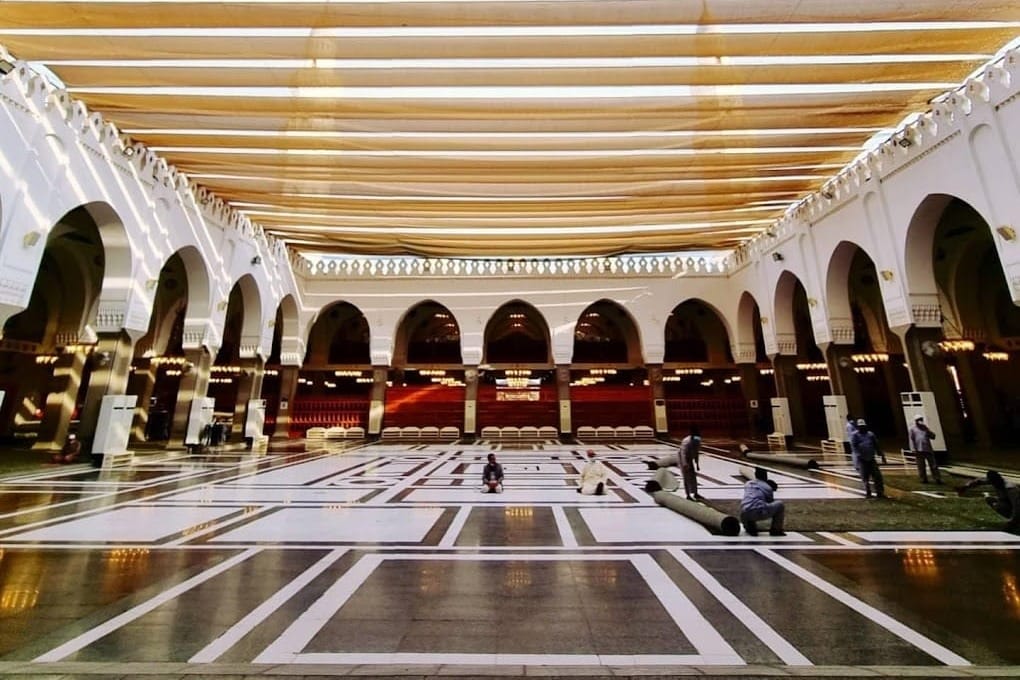
Spiritual and Symbolic Importance
A Defining Moment of Identity
The change of qibla was more than just a change of direction — it marked a defining moment of Muslim identity and independence. Turning toward the Kaaba, built by Prophet Ibrahim (RA), emphasized Islam’s unique connection to monotheism and its own sacred heritage.
A Site of Reflection
For many pilgrims, visiting Masjid al Qiblatain offers a chance to reflect on:
- Unity in worship
- Obedience to divine command
- The early struggles of the Prophet (ﷺ) and his companions
Tips for Visiting Masjid Qiblatain
- Best Time to Visit: Early morning or after Dhuhr to avoid large crowds.
- Dress Code: Modest, respectful attire (as with all mosques in the Kingdom).
- Photography: Permitted outside, but avoid flash inside to respect worshippers.
To explore the full route and learn how to visit all 12 ziyarat stops with ease, check out our guide: 12 Must-Visit Madinah Sites via Hop-On Hop-Off Bus.
Why You Shouldn't Miss Masjid Qiblatain
For anyone traveling to Madinah, Masjid Qiblatain isn’t just a historical site — it’s a powerful symbol of transformation, guidance, and unity. It teaches us how a single moment, guided by divine instruction, can shape the course of an entire faith.
Whether you're on a personal journey of spirituality or simply exploring the Islamic heritage of Saudi Arabia, this mosque is a must-visit. It’s even more accessible with the Madinah Hop-On Hop-Off Bus, making it easy to include in your ziyarat route.
Final Thoughts
Masjid al Qiblatain is more than just a historic landmark in Madinah — it’s a powerful symbol of transformation, divine guidance, and unwavering faith. It represents a moment when the course of Islamic worship was forever changed, uniting the Muslim ummah under a single spiritual direction. Standing within its sacred walls, visitors are reminded of the Prophet’s (ﷺ) obedience and the deep connection between revelation and action. For those exploring the spiritual heritage of Madinah, this mosque offers not only a lesson in history but also a space for reflection, reverence, and renewal.
May your journey be blessed, and may your prayers always find their way!

